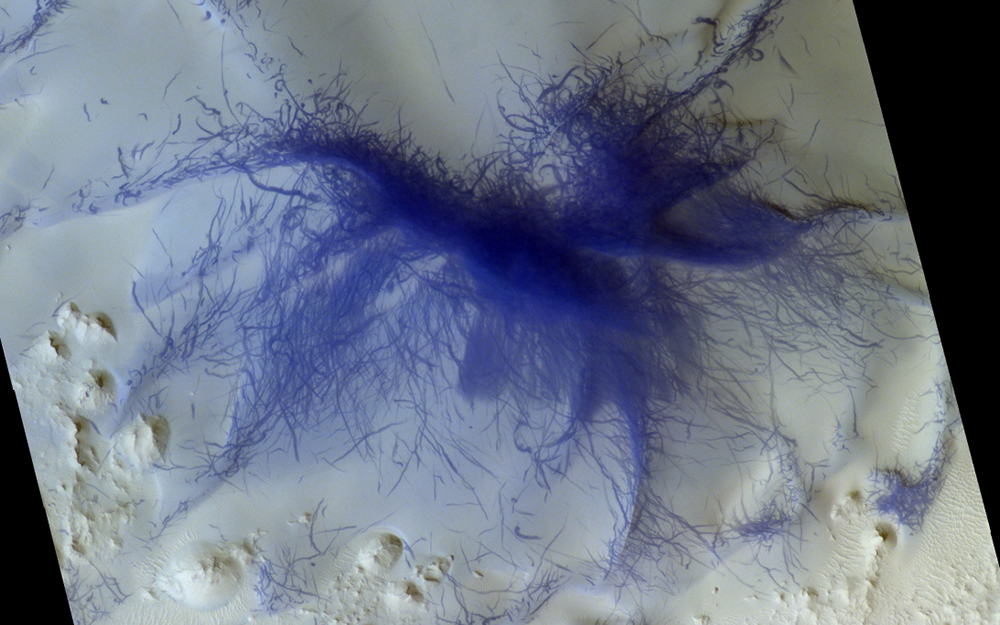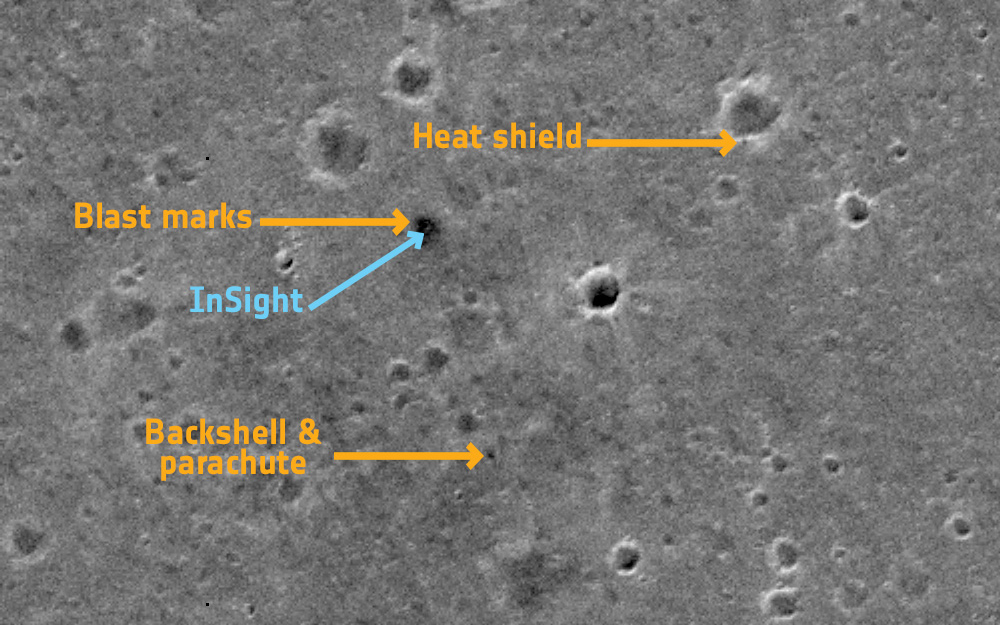Space Orbiter Spots 'Hairy Blue Spider' on Mars
An image captured by a European Space Agency (ESA) orbiter recently showed what appears to be a very hairy, blue spider extending its "legs" across the Martian landscape.
But in reality, the so-called spider is a sprawling pattern left behind on a ridge by a frenzy of dust devils, when hundreds or even thousands of whirling tornadoes formed in the area, ESA representatives said yesterday (March 14) in a statement. [Seeing Things on Mars: A History of Martian Illusions]
The ESA-Roscosmos ExoMars Trace Gas Orbiter captured the image on Feb. 8 in Mars' Terra Sabaea region, using the spacecraft's Color and Stereo Surface Imaging System (CaSSIS). Blue tracks represent parts of the ridge that were scraped and scoured by the tornadoes' winds. Though the actual color of the material exposed by the tornadoes is dark red, it shows up as blue in the color-composite image; this technique enhances the contrast of surface features, according to the statement.

It is unknown why so many dust devils (or dust tornadoes) converged along the ridge, though the region's mountains may impact the flow of air masses and contribute to tornado formation, ESA representatives said.
The ExoMars orbiter, which launched in 2016, also captured a photo of NASA's InSight lander on March 2, as it pounded its burrowing "mole" instrument into the ground to sample Mars' interior. In the image, InSight appears as a small, white speck inside a darker circle of rock scorched by the lander's rockets during touchdown. Nearby are InSight's heat shield and parachute, which were ejected during its descent.

Other photos the ESA released yesterday feature stunningly well-preserved impact craters; layered deposits near Mars' south polar ice cap; and 3D views of craters, dunes and outcrops.
"All of the images we're sharing today represent some of the best from the last few months," Nicolas Thomas, CaSSIS principal investigator from the University of Bern in Switzerland, said in the statement.
Sign up for the Live Science daily newsletter now
Get the world’s most fascinating discoveries delivered straight to your inbox.
The "hairy spider" isn't the first eye-fooling photo of a Martian feature. In 1976, NASA's Viking 1 spacecraft snapped an image of a mountain on Mars that bore an uncanny resemblance to a human face, and the Curiosity rover has captured images that seemingly showed a rat, a lizard and even a floating spoon — unsurprisingly, they all turned out to be oddly shaped rocks.
- Mars Insight Photos: A Timeline to Landing on the Red Planet
- Goliath Birdeater: Images of a Colossal Spider
- The Search for Life on Mars (Photo Timeline)
Originally published on Live Science.

Mindy Weisberger is an editor at Scholastic and a former Live Science channel editor and senior writer. She has reported on general science, covering climate change, paleontology, biology and space. Mindy studied film at Columbia University; prior to Live Science she produced, wrote and directed media for the American Museum of Natural History in New York City. Her videos about dinosaurs, astrophysics, biodiversity and evolution appear in museums and science centers worldwide, earning awards such as the CINE Golden Eagle and the Communicator Award of Excellence. Her writing has also appeared in Scientific American, The Washington Post and How It Works Magazine. Her book "Rise of the Zombie Bugs: The Surprising Science of Parasitic Mind Control" will be published in spring 2025 by Johns Hopkins University Press.









